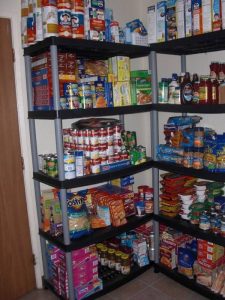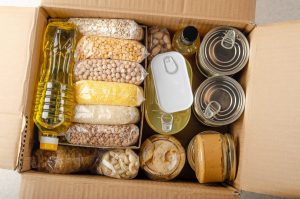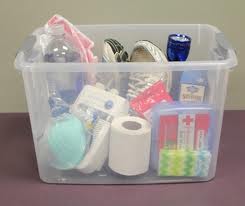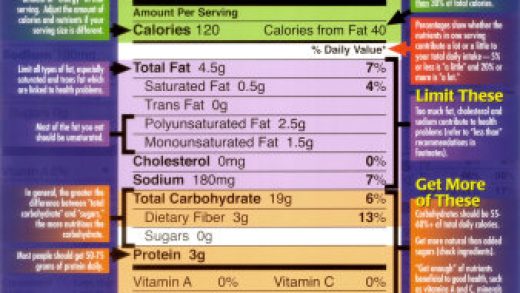All the experts agree we should all have an emergency kit ready at all times. The American Red Cross says you should actually have two emergency kits: a large stash for at home and a smaller, mobile kit to use if you have to move quickly. All of this makes sense.
While I know nothing about other things you are supposed to have for an emergency, like a hand-crank radio and jugs of water, I can help you stock your pantry for just such an occasion. Whether you want to include these items in your home emergency kit or not is up to you.
Out of the Way But Accessible
The first thing to remember is where to put your kit so it is out of the way but easily accessible. Next, experts say you should be sure to buy large plastic containers in which to put your kit. That might take a little creative thinking for many bachelors who live in small apartments. You need something that will keep bugs, moisture and light away from your food.
Your pantry should always contain non-perishable foods, like canned goods, dry goods like rice and pasta, things that can be eaten directly, or things easy to cook. You should consider you may or may not have a way to cook.
Always In The Pantry
There are several items that should always be in your pantry. They are especially useful in an emergency. Here are some of the things we think you need:
Peanut butter is a great source of healthy fats and protein. Usually, it doesn’t have to be refrigerated. Obviously, some households cannot have peanut butter, but there are other things you can use instead.
Crackers make a good substitute for bread if you run out. Also, these are handy for finger foods. In an airtight container or sealed bag, they can last for a very long time.
Nuts, seeds and trail mix kept in sealed containers can also last a long time. But remember that the nuts contain fat which will go rancid over time.
Granola and Power Bars take up very little space and can help bring you through whatever the emergency involves. The same goes for cereal in sealed containers. Most can be eaten without milk if necessary. You can also buy those little individual boxes we had as kids.
Dried and canned fruit. You can go way beyond raisins these days and include a wide variety of fruits available in a dried form. In fact, you should definitely have fruit, dried or canned, in your pantry.
Cans and Jars
Canned goods. Canning is a great way to preserve a bounty of foods. You should have canned goods from every food group. Vegetables, beans, soups, tomatoes, canned meat and seafood, even bread, can be found in a canned form. Cans do not last forever, but they are usually good for several years. With plenty of canned food, you can eat for a long time, with or without the ability to cook. Canned foods, by the process of producing them, are already cooked and can be eaten from the can. Experts say you should remove the label and clean the outside of the can to reduce the chance of contamination.
Canned meats and proteins I have separated because it is often an overlooked category. Obviously, tuna is the main item with which most people are familiar. But there is also chicken, turkey, salmon, sardines, turkey and ham. The broader your selections, the better it will be for you if you need them.
Dry pasta and jarred sauce. It might be a carb-heavy, gluten-full food, but pasta is filling, and dry pasta and jarred sauce can last on pantry shelves for months. If someone in your household has dietary restrictions, look for gluten-free pasta or pasta made from chickpeas (or another alternative).
Powdered and canned milk is essential if you have kids around or if you are a regular milk drinker. Evaporated milk was designed just for lasting a long time without refrigeration. Make sure you don’t get condensed milk, which has lots of sugar added as a preservative. Powdered milk can pretty much go anywhere and last for a very long time if kept dry. While it might not taste as good as real milk, it does have all the nutritional value of the real thing.
All emergency kits need to have a supply of water. Experts say to have a three-day supply, about a gallon per person per day.
Other things you might want to include are various seasonings and baking ingredients in case you can cook. That includes salt, pepper, sugar and flour. If you lose power and have access to outdoors, you can use a charcoal grill or propane stove to cook. You can use opened, cleaned cans as pots. If you don’t, a can or two of Sterno will help you heat up some foods.
More information on how to prepare for an emergency is available at ready.com. This U.S. government site has a ton of information on everything you need to know to be ready for just about anything.






